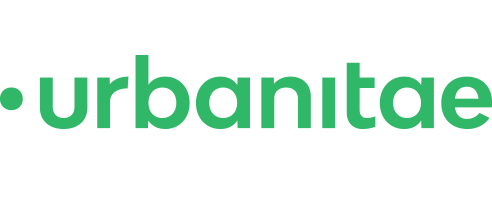
Clés pour comprendre la souscription d’un prêt hypothécaire
Last Updated on 27 mars 2025 by Equipo Urbanitae
La souscription d’un prêt hypothécaire sur le marché immobilier espagnol a été favorisée ces derniers mois par un développement et une croissance importants, principalement impulsés par la stabilité de l’inflation. Cette situation a été renforcée par la décision de la Banque Centrale Européenne (BCE) de commencer à réduire les taux d’intérêt.
Cette combinaison de facteurs a amélioré les conditions de financement, ouvrant un accès plus favorable au crédit et facilitant l’achat de logements, qui a enregistré une augmentation de 5 % en 2024, ainsi qu’une hausse de 11,2 % des signatures de prêts hypothécaires, atteignant un total de 423 761 contrats. Cependant, avant de souscrire un prêt, il est recommandé de prendre en compte plusieurs aspects afin de faire le choix le plus judicieux.
Par exemple, la Banque d’Espagne recommande de bien connaître toutes les conditions et d’évaluer les coûts réels et finaux impliqués dans le processus. Elle conseille également d’examiner les mensualités et les éventuelles améliorations de conditions proposées par les banques.
Que faut-il considérer avant la souscription d’un prêt hypothécaire ?
Avant d’évaluer différentes options, il est important de comprendre les aspects impliqués dans la souscription d’un prêt hypothécaire. Ce processus ne doit pas être perçu comme une simple formalité, car il représente l’une des décisions les plus importantes de notre vie. Il est donc essentiel de comprendre les concepts afin d’éviter de choisir un produit qui ne correspond pas à nos besoins réels ou à notre capacité financière.
Dans cette optique, il est primordial de comparer et d’étudier attentivement toutes les options disponibles : une même formule ne conviendra pas à tout le monde, il est donc nécessaire d’effectuer des études personnalisées en fonction de la situation financière de chacun. Par ailleurs, il est recommandé d’analyser le coût total, en comprenant toutes les dépenses et commissions incluses dans le processus.
Différents types de prêts hypothécaires
- Taux fixe. Ce type de prêt ne prend pas en compte l’indice de l’Euribor pour calculer son taux d’intérêt, ni aucun autre indice de référence, ce qui le rend insensible aux variations de ces derniers. Le taux d’intérêt est défini au moment de la signature, restant stable tout au long de la durée du prêt, et les mensualités ne peuvent être modifiées qu’en cas de non-respect des conditions contractuelles. Actuellement, avec des taux encore positifs, le taux d’intérêt moyen s’établit à 3,25 % fin 2024, bien qu’il puisse varier en fonction de l’établissement et des bonifications applicables.
- Taux variable. Dans le cas des prêts hypothécaires à taux variable, le taux d’intérêt évolue dans le temps en fonction de l’évolution de l’Euribor. Il est composé d’un différentiel fixe déterminé par chaque banque et exprimé en pourcentage, qui s’ajoute au taux d’intérêt variable pour obtenir le taux annuel final. Ce type de prêt est souvent privilégié dans un contexte de taux bas, car il offre généralement des conditions de souscription plus avantageuses qu’un prêt à taux fixe. Cependant, il est important de noter que le montant des mensualités variera en fonction de l’évolution de l’Euribor : si l’indice est bas, cela sera bénéfique, mais s’il est élevé, les mensualités pourraient doubler, entraînant d’éventuels problèmes de liquidité.
- Taux mixte. Ce type de prêt combine les deux précédents. Pendant la première partie du prêt, les mensualités sont à taux fixe, puis elles passent à un taux variable.
Frais et concepts clés
- TIN or Nominal Interest Rate
Also known as TIN, this is the cost that each bank charges for granting the loan over a specific period, excluding commissions or additional expenses. It is expressed as a percentage and is commonly associated with the TAE, although they are not the same. This figure is agreed upon in advance and remains fixed.
- TAE or Annual Equivalent Rate
A percentage indicator of the effective cost of the mortgage, which includes the interest that the buyer will have to pay. It serves to determine the real cost the buyer must bear, including commissions and additional expenses. This is a useful figure for comparing multiple mortgages, as all financial institutions must calculate it in the same way.
- Reference Index
Euribor stands for “European Interbank Offered Rate” and is the reference index for most variable-rate mortgages. Its recent declines have been crucial in the real estate market, generating a positive outlook and making mortgage payments more affordable.
- Opening Commissions
This commission is a percentage that some banks add to the total mortgage amount when granting it. In some cases, the property owner must cover this cost, which generally ranges between 0.1% and 2% of the loaned capital.
- Repayment Term
This refers to the time period in which the loan is repaid, considering that it may vary depending on the financing agreement. In the case of a fixed-rate mortgage, the term is shorter, usually a maximum of 20 years, compared to variable-rate mortgages, which typically range from 30 to 40 years. There are several types: Partial early repayments, aimed at reducing the total debt or the number of years. By modifying the final amount on which the interest rate is calculated, the monthly installments are also adjusted and reduced. Total early repayments, which involve fully settling the outstanding debt. In both cases, any commissions generated by these actions must be considered.
- Mortgage Bonuses
This is one of the most important aspects when choosing a bank for a mortgage. It refers to a discount or bonus on the interest rate based on the banking products the borrower selects when contracting the mortgage. The bonus depends on the number of products contracted, such as life or home insurance, potentially leading to a significant reduction.
- Appraisal Costs
The appraisal is an estimate to determine the value of the property, allowing the bank to assess the risk it assumes by granting the mortgage. If the appraisal is lower than the purchase price, the bank may reject or limit the loan amount, which could require the buyer to contribute more personal capital to the purchase. Conversely, if the appraisal exceeds the purchase price, the buyer may be able to obtain a loan covering up to 80% of the purchase price. The process is carried out by an appraisal company, and its cost is borne by the owner.
- Registry Costs
These costs are paid to the Property Registrar, first for obtaining property information and second for registering the mortgage property. The bank assumes this cost following the enactment of Law 5/2019, dated March 15.
- Notary Costs
There are various types of notarial processes. When the contract is signed and structured—meaning when the notary officially certifies the deeds and the mortgage loan—the bank will cover the cost. If the owner requests a copy of the mortgage loan deed from the notary, they will have to bear the costs.
- Administrative Management Costs
This cost covers the registration of the property deed in the Property Registry. This step pertains purely to administrative procedures, and its cost is covered by the bank with which the mortgage is arranged.
Other Relevant Concepts
- Grace Period
This is the period during which the homeowner can make lower monthly payments after the mortgage has been formalized, paying only interest. It is typically used in cases of financial difficulty, although it is important to understand that interest will continue to accumulate, leading to increased debt.
- Subrogation Commission
Subrogation occurs when the homeowner decides to switch the bank with which the loan is contracted. This type of commission, which was a free process until 2025, is charged for the cancellation of the loan and must be paid to the previous financial institution.

